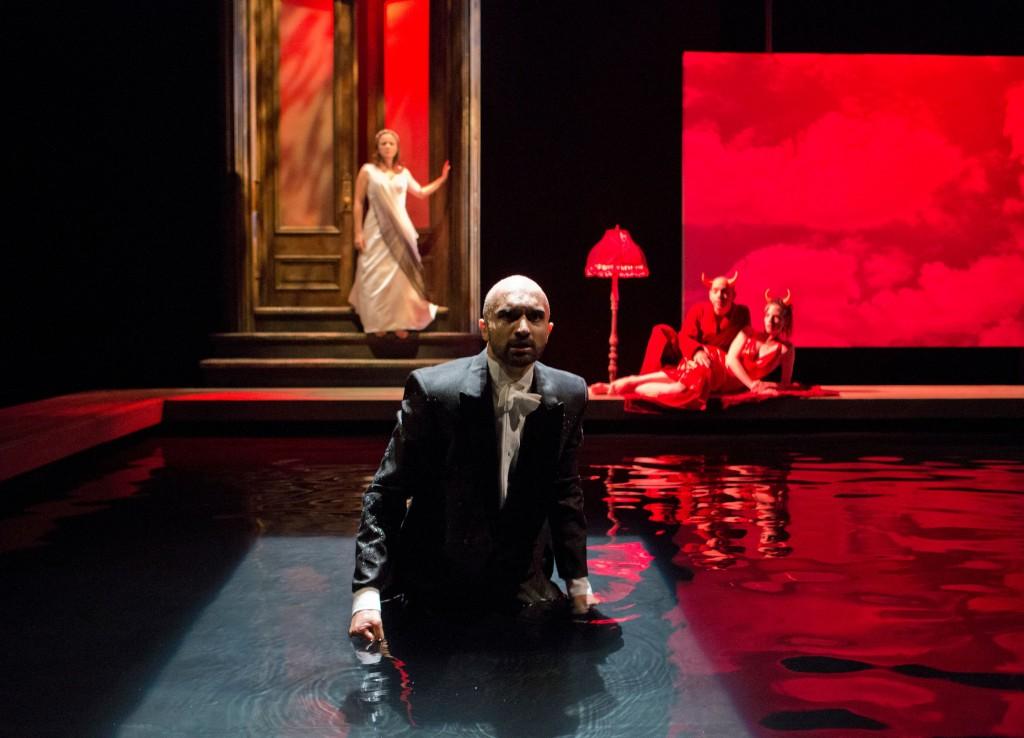Thanks to rave reviews from critics, professors and my peers, I was ready to be moved deeply and amazed visually by the Lookingglass Theatre Company’s 25th-anniversary revival of Northwestern faculty member Mary Zimmerman’s Tony Award-winning “Metamorphoses.” That moment never really came.
Ten myths revolving around love, loss, passion and change form the core of the story. The many elements of the play, from the set and lighting to the acting and movement, come together wonderfully and create beautiful images. The distinguishing feature of the production is Daniel Ostling’s set, which features a large pool bordered by a wooden runway, a chandelier and a painting of the sky, above which gods and goddesses watch the action on Earth below. The pool serves as a great stage for the gorgeous, expressive movements, notably as Ceyx and his men sway with the sailing of their ship and Myrrha’s sexually charged movements as she consummates an incestuous relationship with her father.
Attention to visual detail is apparent throughout. T.J. Gerckens’ lighting design which enhances the mood, providing a sultry red allure to Hades and a foreboding square of light representing the door to Myrrha’s father’s room. The same is true of the music and sound design by Andrew Pluess, particularly the tinkling that follows Midas as he changes everything he touches to gold. Even the transitions stay in character, with songs, stories and dance-like movements taking place as props are removed from the stage.
The myths are retold with comedic tongue-in-cheek moments: Dionysus remarks it’s a bad idea for Midas to turn everything he touches to gold, and Phaeton, ever the typical teenager, recounts to his shrink how he crashed Apollo’s car when driving the sun across the sky. However, at times, with the lack of a narrator to link the stories, the play seems to be what its surface displays — a retelling of myths. The only connection we have to the play’s beginning is through Midas’ touching story as he reappears to wash away his golden power and remove his daughter from her frozen state.
It is clear Zimmerman wants to invoke a message of love and its essential importance of imbuing life with meaning. However, these messages are too heavy-handed, often conveyed through direct address to the audience. The closing scene with Philemon and Baucis combines visuals and meaning wonderfully as the couple becomes one tree and the cast places tea lights on the water, whispering, “Let me not outlive my own capacity to love.” Showing is infinitely more powerful than telling, even if the telling is not as revolutionary and life-changing as I had hoped.

